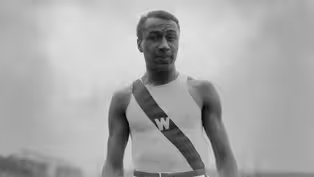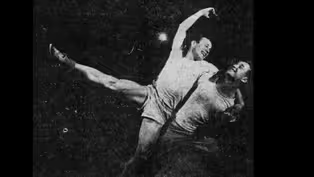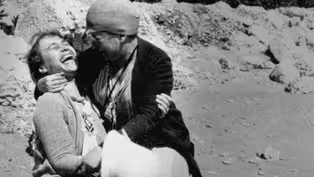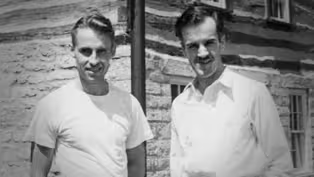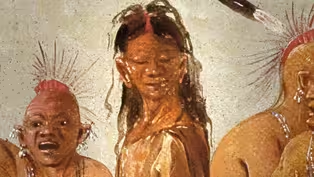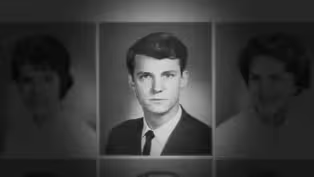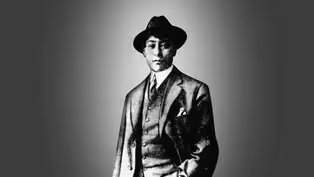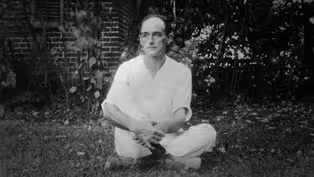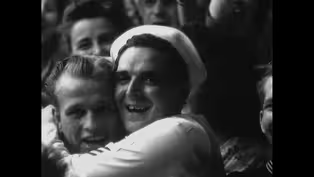Wisconsin Pride
Two-Spirit
Clip: Special | 3m 42sVideo has Closed Captions
Two-Spirit is a term today encompassing many Indigenous beliefs about gender identity.
Indigenous people’s beliefs around gender before North American colonization were very different from Europeans. Two-Spirit is a modern term used to identify Native people who do not define themselves strictly as male or female. Beliefs varied by nation, but Two Spirit people were often widely-respected and performed particular roles in their society.
Problems playing video? | Closed Captioning Feedback
Problems playing video? | Closed Captioning Feedback
Wisconsin Pride is a local public television program presented by PBS Wisconsin
Funding for Wisconsin Pride is provided by Park Bank, SC Johnson, the Greater Milwaukee Foundation, the Evjue Foundation, the charitable arm of the Capital Times, TruStage, the New Harvest Foundation,...
Wisconsin Pride
Two-Spirit
Clip: Special | 3m 42sVideo has Closed Captions
Indigenous people’s beliefs around gender before North American colonization were very different from Europeans. Two-Spirit is a modern term used to identify Native people who do not define themselves strictly as male or female. Beliefs varied by nation, but Two Spirit people were often widely-respected and performed particular roles in their society.
Problems playing video? | Closed Captioning Feedback
How to Watch Wisconsin Pride
Wisconsin Pride is available to stream on pbs.org and the free PBS App, available on iPhone, Apple TV, Android TV, Android smartphones, Amazon Fire TV, Amazon Fire Tablet, Roku, Samsung Smart TV, and Vizio.
[crickets chirping] - Kai Pyle: If you are living in North America, you're living on indigenous land, and you need to know the history of the land you're living on.
[wind brushes grass field] The history of Two-Spirit people is an important part of that.
- Two-Spirit is a term used today for Native people, past and present, believed to possess both masculine and feminine spirit.
It could be a person born male, but drawn to ch aracteristically female roles throughout their life.
Historically, Two-Spirit people were widely accepted by their communities and were known by many names.
- Kai Pyle: We have a really rich vocabulary for describing gender and sexual diversity.
In Anishinaabemowin, our language, it's agokwe.
For the Navajo, it's nàdleehé.
For Dakota people, it's winkte.
We have terms for people like us.
- Names differed by nation and language, as did a Two-Spirit person's role in their society.
But often, Two-Spirit people were highly respected and believed to possess special talents and insight.
- Kai Pyle: It encompasses our world views, which are often very different from how Euro-American society defines gender and sexuality.
- Though embraced by their communities, Two-Spirit people were met with disdain by Western travelers.
In 1830, American artist George Catlin traveled the Mississippi River and witnessed a Sauk and Meskwaki ceremony centered on a Two-Spirit member of the tribe.
While the event may have been he ld in honor of the Two-Spirit, the title of Catlin's painting reveals his attitude toward the subject.
- Kai Pyle: The painting was called "The Dance of the Berdache."
The term 'Berdache' came to refer to what they would call, like, a passive homosexual, in their derogatory terms.
Catlin describes it as one of the most disgusting and abhorrent facets of the New World; that it should be eradicated before it even can be recorded in any more detail.
[heartbeat] ♪ ♪ - The Europeans who came to the New World brought very specific views about those who deviated from heterosexual norms.
Eventually, those norms would be rigidly enforced.
- Kai Pyle: Starting in the late 1800s, there was a big push to civilize Native people.
The United States government and often also the religious organizations that ran many of the boarding schools were trying to make the kids into 'cookie cutters' of American boys and American girls.
- For Two-Spirit people, this was especially traumatic.
- Kai Pyle: There are stories of Two-Spirit people who disappeared, essentially, from boarding schools.
Once discovered to be Two-Spirit, they were taken away and never seen again.
[somber music]
Video has Closed Captions
Clip: Special | 7m 25s | La Crosse’s George Poage, the first Black Olympic medalist, lived a hidden life. (7m 25s)
Video has Closed Captions
Clip: Special | 6m 35s | In UW’s Haresfoot club, men performed in drag, but members ran afoul of the University. (6m 35s)
Video has Closed Captions
Clip: Special | 6m 13s | The progressive, visionary lesbian couple behind Milwaukee's Institute of Art and Design. (6m 13s)
Video has Closed Captions
Clip: Special | 6m 56s | Influenced by Warner’s example, two gay men created the influential historic site. (6m 56s)
Preview: Special | 3m | George Poage, forced to hide his LGBTQ+ identity, became the first Black Olympic medalist. (3m)
Preview: Indigenous Two-Spirit
Preview: Special | 3m 35s | Wisconsin's LGBTQ+ history and present includes Indigenous two-spirit people. (3m 35s)
Video has Closed Captions
Clip: Special | 6m 11s | A secret policy of removing gay students and staff from UW-Madison took an enormous toll. (6m 11s)
Video has Closed Captions
Clip: Special | 5m 44s | Put on trial for gender expression, Ralph Kerwineo became the “Girl-Man” of Milwaukee. (5m 44s)
Video has Closed Captions
Clip: Special | 4m 17s | Called Wisconsin’s first out gay man, Warner defied the gender expectations of his time. (4m 17s)
Video has Closed Captions
Clip: Special | 2m 6s | World War Two fight held unfulfilled promises for a better life for LGBTQ+ Americans. (2m 6s)
Providing Support for PBS.org
Learn Moreabout PBS online sponsorshipSupport for PBS provided by:
Wisconsin Pride is a local public television program presented by PBS Wisconsin
Funding for Wisconsin Pride is provided by Park Bank, SC Johnson, the Greater Milwaukee Foundation, the Evjue Foundation, the charitable arm of the Capital Times, TruStage, the New Harvest Foundation,...
